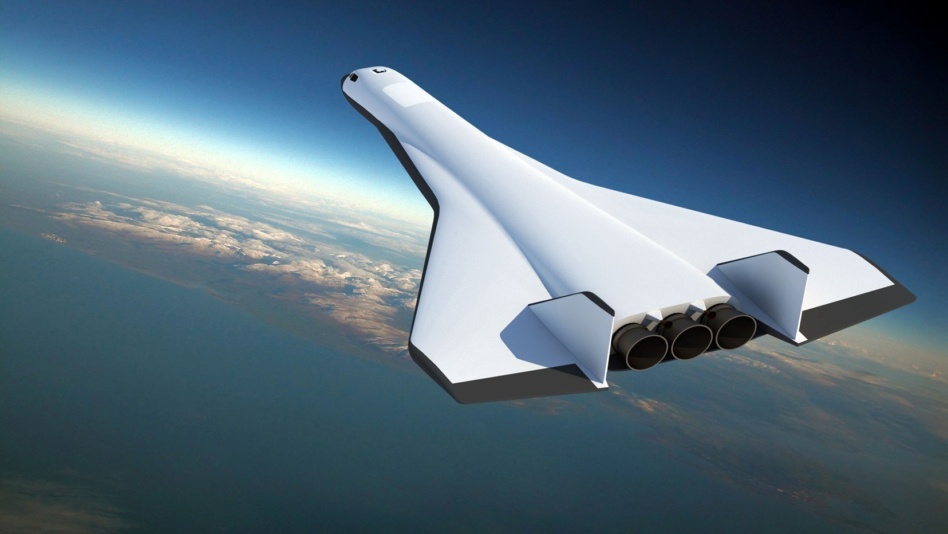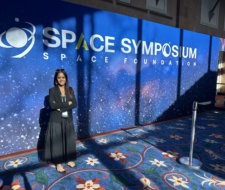Radian Aerospace recently emerged from stealth to unveil what it’s been developing for the last six years: a fully reusable, single-stage-to-orbit, horizontal-takeoff-and-landing spaceplane.
It’s the stuff of science fiction—and often hailed as the holy grail of human spaceflight. Developing that holy grail is no overnight process. When ditching its stealth cloak, Radian also announced a $27.5M seed round. The startup has a founding team, cap table, and advisory board that signals it’s not playing around, no matter how audacious the ultimate goal.
Payload interviewed Radian CEO Richard Humphrey (via email) to get a better sense of the company’s roadmap, technological unlocks, scientific developments, historical precedents, new space business prospects, spaceplane economics, and more.
NB: This interview has been edited for length and clarity.
What are the biggest gating factors that have held spaceplanes back in the past? Physics? Engineering? Cost? All of the above?
It’s been looked at several times, but there hasn’t been a hard look in the last few decades. It’s been very challenging to close the physics loop, and it still is. But there have been advancements in engineering tools, materials, and manufacturing technologies, as well as a reduction in component Size, Weight, and Power (SWAP).
When was the last well-funded, true attempt at a spaceplane? What’s changed between now and then?
I’m not sure there has ever been a true spaceplane program like ours, where you fly to and from orbit. The shuttle took off like a traditional rocket, dropped the solid boosters and external tank, and landed like an airplane. The X-33, which was well-funded, would have launched vertically, but unlike the shuttle, it would have been a single-stage vehicle. Other craft that are often called spaceplanes, like the X-37B and Dream Chaser, are launched on traditional rockets and fly back to a runway landing. I tend to think of those more as winged reentry vehicles.
If you narrow the definition of spaceplane to things that fly to and from orbit, on a combination of wings and rocket engines, we are pretty unique.
Using the X-33 as the closest historical exemplar of a spaceplane, much has changed since then. We can take advantage of years of advancements in materials science, composite primary structure, durable thermal protection systems, SWAP reduction for electrical and mechanical components, and manufacturing technologies that allow us to go from concept to hardware much faster, and make changes much more rapidly than you could in the past.
I’m sure a lot of this is proprietary secret sauce, but can you say anything about the step-change advancements in materials science, miniaturization, or manufacturing that makes Radian One technically and financially feasible?
There wasn’t one big breakthrough, but a progression of capabilities across a range of technologies. I think what’s advanced the most is composite structures. Composite advancements did not change overnight, but over a long march of aviation technology improvements for military and civil aircraft. This will make our vehicle lighter than its metal counterpart. There are other important advancements, but I’ll leave them in the category of secret sauce.
To what extent will you have to build vs. buy? How much of the plane needs to be developed ground-up and made in-house?
We take a very measured approach to build vs. buy. I really like to leverage companies with deep expertise in a specific field. That way, we can take advantage of their depth of knowledge, bench strength, and process expertise by applying it to a new capability within their domain.
We will have to do some things on our own. They are things that the industry does not do, or where companies have not found a big enough market to specialize in. So, it really is a mixed bag. But we try to think carefully about every item we put in the bag.
How could your cost structure eventually become more favorable than traditional and new-school rocket companies? (Editor’s note: bad question!)
I’m not sure I understand this question. If you are asking if horizontal launch might become more favorable than traditional vertical rockets, I’d answer that we think there are many mission types needed in this emerging space economy. It’s just like any mode of transportation—There are semi-tractor trailers and SUVs, A380s and CRJs, and ocean liners and race boats.
The future of space will be no different. Mission needs will dictate the most favorable size and type of vehicle. Radian won’t be the best to deliver space stations to LEO, but we will likely be better at delivering people and supplies needed on a frequent basis once we’re flying. Think of us as a catalyst for those new space companies that are just emerging and those that are enabled only once our service begins.
If the question was more about the cost comparisons, I’d add to the above that with horizontal launch, there is, relatively speaking, a minimal amount of infrastructure and servicing personnel needed for our concept, compared to not only traditional companies, but all vertical launch architectures.
What sorts of first use cases and customers are you envisioning for your spaceplanes? Is it too early to say?
We have a significant number of agreements and intent letters signed across our use cases. Most are subject to NDA, so we can’t share the specific names or values. Notably, we have a number of mission sets that include habitation, earth observation, in-space servicing, downmass, and launch and delivery. Well over a dozen companies have signed across all these areas.
In a highly competitive, well-funded launch market, what does it say about Radian’s team and vision that you were able to raise this round with the cap table that you have?
Radian One is an important idea that requires substantial investment over multiple years. The financing environment is much more conducive now to raising private capital for big disruptive products, following the commercial successes of the last several years. We have been fortunate to have the support of such a great team, along with so many notable and thoughtful investors that recognize Radian as not just another launch company, but rather the first of the next generation of launch.
Any other questions I should’ve asked but didn’t? Anything you’d like to mention?
We have a unique opportunity. Technology advancements sometimes come in waves. People get hopeful and put a lot of energy into something. When it doesn’t work or is too slow to develop, they stop working on it. The technology is more or less forgotten.
We didn’t invent the horizontal-takeoff-and-landing spaceplane concept, but the industry paused for several decades because the technology just wasn’t there to make it happen. We are very fortunate to be able to develop Radian One when there is the convergence of the new space market needs and increased financial attention on disruptive opportunities. This comes precisely as certain technologies have developed over recent decades that serve to make a concept imagined years ago come to life today.




